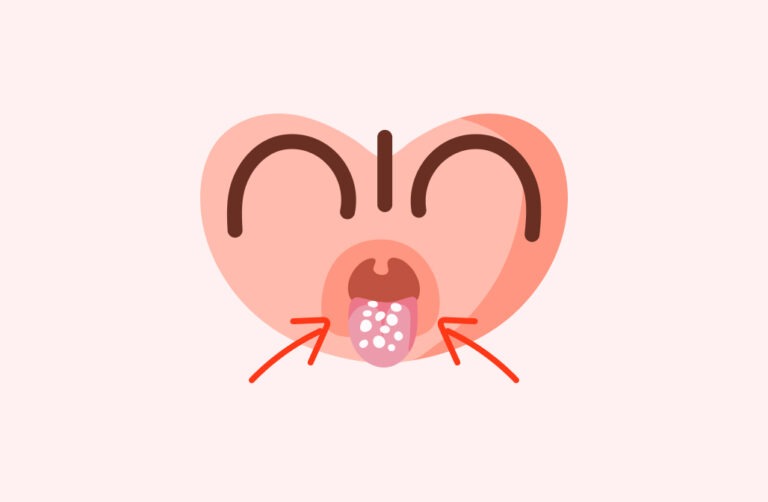The sound of baby crying echoes through countless homes, stirring a mixture of instinct, worry, and—sometimes—frustration in even the most seasoned parents. Why do these tiny, astonishing humans rely so much on tears? What does it mean when the decibels rise and nothing seems to calm them down? Unpredictable cries, sudden bursts of distress, nights punctuated by wails—these moments can leave any caregiver exhausted, searching for reassurance, guidance, and, above all, answers. Here, we unpack the intricate language of baby crying, slicing through myths and offering evidence-based perspectives. You will discover not only what triggers infants’ tears but also how their brains, bodies, and environments interact to shape those moments. What if soothing really could be simpler—or at least, more understandable? Let’s look closer at the questions that keep parents up at night, and the practical, scientific insights that can truly make a difference.
Why Babies Cry: Exploring the Science and Triggers
Why does baby crying seem to erupt at the most unpredictable times? Simply put, it’s the newborn’s premier survival tool and the most dynamic form of expression available to them. This isn’t arbitrary noise; every cry is powered by a cascade of neurological and physiological processes. At the heart of this drama sits the infant’s amygdala, that ancient structure driving emotional states and locus coeruleus, triggering physical agitation and the notorious cortisol surge—what you might call the stress hormone symphony.
Babies cry to signal everything: hunger cues, over-tiredness, discomfort, need for reassurance, even boredom or sensory overload. The infamous “witching hour”—those evening peaks—traces back to a neurological crescendo as the day’s stimuli stack up. Each episode of crying paves the way for parent-child attachment, directly stimulating neurodevelopment, reinforcing the importance of prompt attention.
Every family’s journey into baby crying is unique. Some infants let out a sporadic mewl, while others seem locked in endless vocal marathons. Patterns shift, especially around six to eight weeks—when crying tends to peak. Over time, the maturation of the nervous system lets babies soothe themselves more effectively.
Common Reasons Behind Baby Crying: A Practical Guide
Hunger and Sucking Reflex—The Drive That Never Quits
The archetype of baby crying is hunger. Early rooting, vigorous sucking, and the rhythmic escalation of cries are your baby’s physiological alarm bells. Even if the belly is full, a desire to suck for comfort can drive these cues—a complex interplay of sensory need and emotional reassurance. Don’t be surprised if feeding leads not only to silence, but to softer coos—satiety dampens the distress response, mediated by hormones like oxytocin.
Fatigue and Overtiredness: The Sleep-Cry Cycle
Picture this: dusk falls, eyelids flutter, and suddenly your living room fills with baby crying that seems both insistent and fragile. Fatigue-induced cries often oscillate between gentle whimpers and sharp protests, especially after overstimulation. Yawning, rubbing the eyes, even arching the back signal a growing sleep debt. Gentle bedtime rituals can act as anchors, using circadian cues to prep an immature nervous system for deep rest.
Physical Discomfort: The Obvious and the Subtle
A soggy diaper, a tag scratching delicate skin, a chilly draft, or a sudden heatwave—all can ignite the familiar wail. Sometimes it’s as simple as temperature sensitivity or the tactile irritation of a stray thread. Responsive checks (think touch, smell, quick visual survey) can turn mystery cries into manageable moments.
Pain, Colic, and Medical Discomfort
Colic: The very mention activates parent anxiety. Defined by long, high-pitched crying bouts, colic often includes clenched fists, knees to chest, a tensed abdomen. The science is clear—colic is mostly a transient phase (peaking at six weeks, gone by four months), not usually a sign of illness. Lactic acid in the gut, immature GI systems, even subtle gut flora imbalances have been studied, though no definitive culprit exists.
Teething pain, gastroesophageal reflux (spitting up, fussing post-feeds), and even infections can enter the stage. Observe for symptoms beyond baby crying: fever, lethargy, breathing changes warrant immediate attention.
Connection, Comfort, and the Need for Reassurance
Sometimes, the urge to cry emerges not from discomfort, but from a need for security and parental proximity. Skin-to-skin contact isn’t just comforting, it regulates the infant’s heart rate and temperature, and triggers the release of calming endorphins. Soft voices, rhythmic movements—such as rocking or gentle bouncing—demonstrate to the baby that their internal chaos can be safely shared.
Overstimulation and Boredom
Babies oscillate between craving stimulation and needing calm. Loud environments, fluctuating lights, or an influx of visitors can tip things out of balance. On the other hand, a quiet monotony can spur restlessness. Understanding your child’s window of tolerance, and adjusting sensory input, can decrease unnecessary baby crying episodes.
The Rare and the Unusual
What if you’ve checked everything and that persistent wail continues? Rarer causes—like the so-called “hair tourniquet” (a strand of hair wrapped around a finger or toe, disrupting circulation), medication reactions, or even minor sleep shudders—should be considered. Always look for anything out of the ordinary: a rapid change in the nature of crying, especially if coupled with other physical symptoms, deserves timely evaluation.
Recognizing Cry Patterns: The Hidden Language
Each infant develops a nuanced repertoire—a unique “crying vocabulary,” so to speak. Studies show that the spectral frequency and temporal structure of a baby’s cries can help distinguish between needs:
- Hunger cry: Starts rhythmic, sharpens with urgency, often alongside sucking motions.
- Fatigue cry: Grows from soft whimpers into plaintive howls, with visible signs like fussing or rubbing at eyes.
- Pain cry: Piercing, high-pitched, perhaps even breath-holding; note arching of the back or body rigidity.
- Discomfort: Usually steady but not frantic, resolved quickly by addressing the issue (diapers, clothing).
- Colic: Explosive, lasts longer, emerges without warning (especially evenings).
- Seeking comfort: Muffled or escalating whimpers, quickly easing with touch or parental closeness.
Listening for the subtle variations in pitch, volume, and duration trains your ear to interpret the meaning behind each instance of baby crying.
The Developmental Spectrum: Age, Temperament, and Health
Infants are born with different temperaments—some mellow, others highly sensitive to sensory changes. Environmental influences, past birth experiences, or even minor trauma during delivery can amplify typical patterns. Crying, in this context, is not simply a demand but a manifestation of underlying emotional and physiological processes.
- Peak crying stage: Six to eight weeks, followed by a steady decline as self-soothing skills develop.
- Evening fussiness: Tied to immature nervous systems; these phases usually pass.
- Medical concerns: Prolonged fussing, especially outside the expected phase, can sometimes indicate food intolerances (like cow’s milk protein allergy) or infections.
The Biology of Crying: Hormones, Attachment, and Brain Development
Nothing triggers urgency like baby crying. The science points to a rapid elevation of cortisol, rapidly altering the metabolic state of both infant and parent. At the same time, caregivers experience increased brain activity in regions linked to emotion and empathy. These bi-directional signals are fundamental—they foster secure attachment, teach emotional regulation, and seed the roots of trust.
Interestingly, research in prosody (the musical properties of cries) suggests that a baby’s native language even influences the melody of their cries, laying early neural groundwork for language acquisition.
How to Respond: Medical Strategies for Parents
You might ask, “Should I respond every time? Can I spoil my child?” The consensus is clear: responsive caregiving has demonstrated psychological and physiological benefits for babies. Addressing hunger, ensuring a clean diaper, adjusting temperature, and creating a calm environment—all these interventions show the child that their signals are valid and effective.
What about your own stress? Self-regulation (through deep breaths, short pauses, seeking help) not only benefits you but also transmits a sense of safety to your little one, thanks to the phenomenon of emotional mirroring.
Soothing Techniques: Evidence-Based, Parent-Tested
- Prioritize feeding and burping, especially after bouts of intense baby crying.
- Swiftly address diaper discomfort or irritating clothes.
- Use skin-to-skin contact for regulation—proven to stabilize vital signs and boost oxytocin.
- Rock gently, walk, or sway for rhythmic vestibular stimulation.
- Offer a pacifier—the non-nutritive sucking reflex is a direct line to calming neural pathways.
- Shield your child from overstimulation by dimming lights and lowering voices.
- Warm baths or soft massages release tension, aiding in the transition from high arousal to rest.
- Retreating to a dark, quiet room can eliminate external triggers and ground both you and your baby.
When feeling overwhelmed, a brief, safe break is wise. NEVER shake a baby—shaken baby syndrome (SBS) is a well-documented medical emergency, with lasting neurological consequences.
Excessive Crying and Colic: When to Worry, When to Wait
Is your infant’s crying relentless? The rule of threes helps define excessive: more than three hours per day, more than three days a week, for over three weeks. Classic colic often emerges between two and five weeks of age, disappearing around month four. Interventions with the most scientific support include:
- Adjusting feeds (addressing reflux or food intolerances)
- Gentle abdominal massages
- Babywearing, which has been shown in studies to minimize the frequency and intensity of baby crying
- Safe swaddling practices, promoting containment and comfort
- Using white noise or pacifiers
Contact your healthcare professional immediately if the crying seems abnormal—especially with signs of illness, lethargy, poor feeding, vomiting, or labored breathing.
The Emotional Impact on Caregivers: Navigating Stress and Fatigue
Endless baby crying can tax even the most resilient parents, generating feelings of frustration, helplessness, and guilt. Psychosocial research shows that chronic sleep deprivation and emotional strain are, in fact, risk factors for parental burnout.
Here’s the reality: taking necessary breaks, seeking support networks—be it family or friends—and practicing self-compassion are actively beneficial. Your ability to care for your baby depends, in large part, on how well you care for yourself.
Common Myths, Scientific Evidence
The idea that quickly responding to baby crying will create dependency or “spoil” your child is not supported by modern neuroscience. Infants under six months are not developmentally capable of manipulation. In contrast, studies worldwide highlight that responsive parenting lowers cortisol levels in infants, reduces future anxiety, and fosters secure emotional development.
Self-soothing, a much-revered milestone, emerges with neurodevelopmental maturity. Until then, sensitive and prompt caregiving remains the gold standard.
Proactive Prevention: Setting the Stage for Calm
- Establish gentle, predictable routines for sleep and feeding.
- Encourage restful sleep environments—dark, cool, quiet, and safe.
- Ensure adequate nutrition; burp during and after meals.
- Keep your baby comfortably dressed and dry.
- Provide comforting physical contact; frequent holding or babywearing.
- Limit excessive noise, bright lights, or abrupt changes in environment.
- Respond promptly to cues; trust your instincts.
- Prioritize your own wellbeing—rest, hydration, and support are not luxuries but necessities.
When to Seek Medical Advice: Warning Signs Parents Should Know
Immediate medical attention is warranted if baby crying is accompanied by:
- Lethargy or unresponsiveness
- Fever above 100.4°F (38°C) in a newborn
- Rapid, labored, or noisy breathing
- Signs of dehydration: dry mucous membranes, fewer wet diapers, sunken fontanelle
- Persistent vomiting, especially projectile
- Seizures or convulsions
- Unusual rash or color changes (pale, blue, mottled skin, purple spots)
- Apparent trauma or injury
Always trust your intuition—when in doubt, prompt evaluation ensures safety and peace of mind.
Key Takeaways
- Baby crying serves as the primary—yet temporary—language for infants, signaling an array of needs, from hunger to comfort, pain to overstimulation.
- Attuning to the nuances of crying patterns and accompanying body language fosters more accurate responses.
- Medical research consistently shows that loving, rapid, and sensitive caregiving aids healthy brain development, without fostering dependency.
- Excessive crying deserves consideration—especially if symptoms appear abnormal. Immediate help protects both your baby and your own mental health.
- Caregivers’ wellbeing is vital: practical breaks, community support, and self-compassion help preserve parental resilience.
- Reliable resources and health professionals are available for every family—never hesitate to prioritize safety or pursue reassurance.
- For tailored advice, interactive health questionnaires, and evidence-based tips, you can download the Heloa app and access a wealth of pediatric expertise on demand.
The journey of decoding baby crying may be complex, interwoven with science, instinct, and love. Trust in your capacity to learn, to adapt, and to seek support—for yourself, and for the remarkable child in your care.
Questions Parents Ask
How long is it normal for a baby to cry each day?
It’s entirely normal for young babies to cry up to two or three hours within a 24-hour period, especially during the first few months. Crying tends to peak around six to eight weeks before gradually decreasing as your baby’s nervous system matures. Some days may feel more intense than others—every infant has their own rhythm. If your baby seems generally content between cries and shows healthy feeding and sleeping habits, you can be reassured that this pattern is typical. However, if you feel uneasy or if your baby’s crying seems excessive, don’t hesitate to seek support or talk with a healthcare professional.
Why do some babies cry more than others?
Every baby is unique, and their level of crying can be influenced by temperament, sensitivity to surroundings, and even minor differences in routine or health. Some infants naturally express themselves more intensely, while others remain more serene. Factors like overstimulation, digestive discomfort, or simple personality differences can all play a role. It’s important to remember that this isn’t a reflection on your parenting—some babies just need a bit more time and closeness to feel calm. If you’re finding the experience challenging, know that many other parents feel the same way, and reaching out for advice or comfort can make a real difference.
What can I do if my baby’s crying makes me feel overwhelmed?
It’s completely understandable to feel overwhelmed when your baby cries for extended periods—your emotions matter, too. Taking a short break—such as placing your baby safely in their crib while you take a few deep breaths—can be helpful for both you and your baby. Reaching out to family, friends, or support professionals is also a positive step, not a sign of weakness. Remember, caring for yourself is part of caring for your child. If you ever have concerns about your ability to cope or notice persistent feelings of frustration or sadness, it’s important to seek support. You’re not alone, and finding help is a strong and loving choice for your family.

Further reading:









